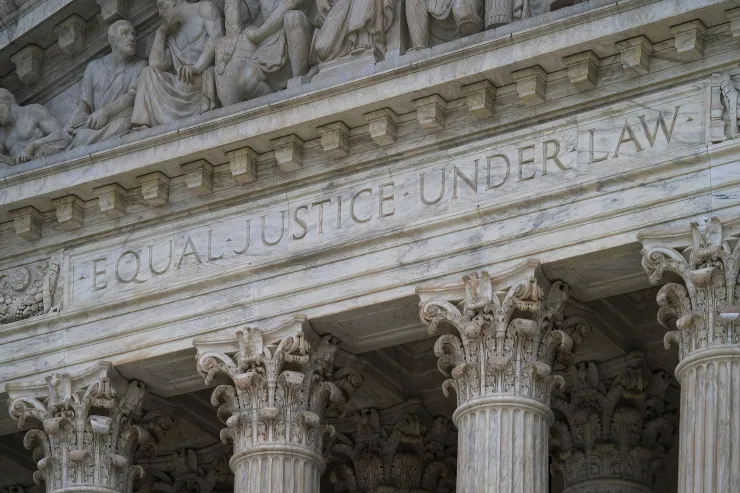What is ‘true threat’ and how does it affect social media?
Jun 27, 2023, 2:00 PM | Updated: 3:26 pm

Supreme Court
WASHINGTON, D.C. — Is it a crime to post threatening language on social media? It can be, but the Supreme Court today defined the state of mind that must be present when a person posts a “true threat”.
The case is called Counterman v. Colorado. Counterman sent hundreds of Facebook messages to a local singer. She never responded. In fact, she blocked him, and he just opened new accounts and kept sending her messages.
The messages started to get violent, including “Staying in cyber life is going to kill you,” and “You’re not being good for human relations. Die.”
“It’s a really interesting opinion,” KSL Legal Analyst Greg Skordas said. “As I look at Colorado’s stalking statute that was at issue in this case, it’s really similar to Utah’s.”
Utah’s stalking statute
Utah’s law makes it a crime to direct “two or more acts (including communications) to a specific individual,” in any of a number of ways, including over the internet.
Here is the key — you commit stalking if you “intentionally or knowingly” engage in conduct that would cause a reasonable person to fear or suffer emotional distress.
“A true threat is in the eyes of the beholder,” Skordas said. “Would a reasonable person have felt threatened under the circumstances of the case?”
The First Amendment and true threat
Justice Elena Kagan writes in the opinion released today: “From 1791 to the present, the First Amendment has permitted restrictions upon the content of speech in a few limited areas.”
True threats are one of those limited areas.
“The ‘true’ in that term distinguishes what is at issue from jests, ‘hyperbole,’ or other statements that when taken in context do not convey a real possibility that violence with follow,” Kagan wrote for the majority.
An example she gave of a threat that wasn’t a “true threat” would be “I’m going to kill you for showing up late.” A reasonable person would not feel threatened by that statement.
What is the intention?
“Under most laws, there is a mens rea requirement,” said Skordas. “That is, you have to find that the person who committed the crime had some intent or knowledge or recklessness that their conduct was going to create the result.”
In this case, the Court decided that the level of intention required is not intentionally or knowingly, but recklessly.
“Reckless defendants have done more than make a bad mistake,” Kagan wrote. “They have consciously accepted a substantial risk of inflicting serious harm.”
Skordas pointed out that a criminal defendant is unlikely to admit he intended to cause fear or knew he was causing fear. Similarly, he will likely not admit that he was reckless in causing fear.
“You have to prove it from the mind of the jury, what a reasonable person would have assumed,” Skordas explained.
Related: Supreme Court rejects election law theory, sends First Amendment case back to lower court













